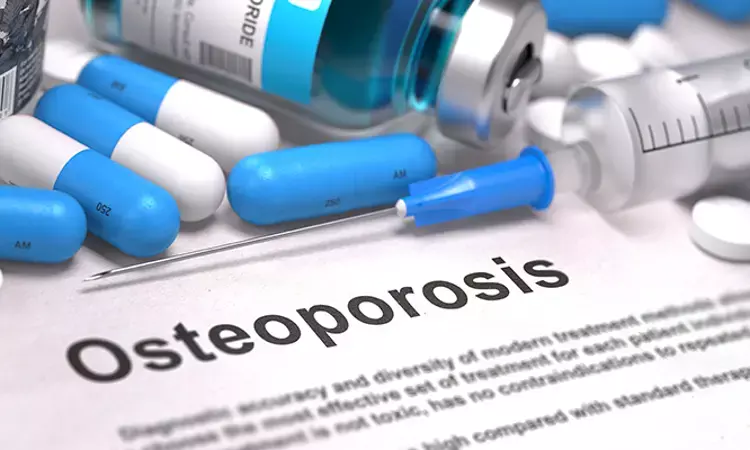- Home
- Medical news & Guidelines
- Anesthesiology
- Cardiology and CTVS
- Critical Care
- Dentistry
- Dermatology
- Diabetes and Endocrinology
- ENT
- Gastroenterology
- Medicine
- Nephrology
- Neurology
- Obstretics-Gynaecology
- Oncology
- Ophthalmology
- Orthopaedics
- Pediatrics-Neonatology
- Psychiatry
- Pulmonology
- Radiology
- Surgery
- Urology
- Laboratory Medicine
- Diet
- Nursing
- Paramedical
- Physiotherapy
- Health news
- Fact Check
- Bone Health Fact Check
- Brain Health Fact Check
- Cancer Related Fact Check
- Child Care Fact Check
- Dental and oral health fact check
- Diabetes and metabolic health fact check
- Diet and Nutrition Fact Check
- Eye and ENT Care Fact Check
- Fitness fact check
- Gut health fact check
- Heart health fact check
- Kidney health fact check
- Medical education fact check
- Men's health fact check
- Respiratory fact check
- Skin and hair care fact check
- Vaccine and Immunization fact check
- Women's health fact check
- AYUSH
- State News
- Andaman and Nicobar Islands
- Andhra Pradesh
- Arunachal Pradesh
- Assam
- Bihar
- Chandigarh
- Chattisgarh
- Dadra and Nagar Haveli
- Daman and Diu
- Delhi
- Goa
- Gujarat
- Haryana
- Himachal Pradesh
- Jammu & Kashmir
- Jharkhand
- Karnataka
- Kerala
- Ladakh
- Lakshadweep
- Madhya Pradesh
- Maharashtra
- Manipur
- Meghalaya
- Mizoram
- Nagaland
- Odisha
- Puducherry
- Punjab
- Rajasthan
- Sikkim
- Tamil Nadu
- Telangana
- Tripura
- Uttar Pradesh
- Uttrakhand
- West Bengal
- Medical Education
- Industry
Romosozumab use before antiresorptive agents tied to greater BMD responder rate in osteoporosis

Romosozumab is a bone-forming agent with the dual effect of increasing bone formation and decreasing bone resorption.
Felicia Cosman et al found in the study that - larger mean bone mineral density (BMD) increases and greater BMD responder rates were achieved when romosozumab was used before, versus after, an antiresorptive agent. Since BMD on treatment is a strong surrogate for bone strength and fracture risk, this analysis supports the thesis that initial treatment with romosozumab followed by an antiresorptive will result in greater efficacy versus the reverse sequence.
To evaluate whether treatment sequence affects romosozumab response, the authors reviewed randomized clinical trials where romosozumab was administered before (ARCH, FRAME) or following (STRUCTURE, Phase 2 extension) an antiresorptive (alendronate or denosumab, respectively).
The authors evaluated changes in total hip (TH) and lumbar spine (LS) BMD, the proportions of patients who achieved BMD gains≥3% and≥6% at the total hip and lumbar spine, and the profile of changes in levels of the bone formation marker procollagen type I N-terminal propeptide (PINP) and the bone resorption marker β-isomer of the C-terminal telopeptide of type I collagen (β-CTX) after 12 and 24 months of treatment with the different treatment sequences.
The observations of the study were :
• With 1-year romosozumab initial therapy in ARCH and FRAME, TH BMD increased 6.2% and 6.0%, and LS BMD increased 13.7% and 13.1%, respectively.
• When romosozumab was administered for 1 year after alendronate (STRUCTURE) or denosumab (Phase 2 extension), TH BMD increased 2.9% and 0.9%, respectively, and LS BMD increased 9.8% and 5.3%, respectively.
• Over 2 years, TH and LS BMD increased 7.1% and 15.2% with romosozumab/alendronate, 8.5% and 16.6% with romosozumab/denosumab, and 3.8% and 11.5% with denosumab/romosozumab, respectively.
• A greater proportion of patients achieved BMD gains≥6% when romosozumab was used first, particularly for TH, versus the reverse sequence (69% after romosozumab/denosumab; 15% after denosumab/romosozumab).
The authors commented that - ' Since osteoporosis is a chronic condition requiring long term therapy, for those patients at very high risk for fracture who will likely need both bone-forming and antiresorptive agents, improved clinical efficacy will be seen if the bone-forming agent is used as initial therapy.'
Further reading:
Romosozumab and antiresorptive treatment: the importance of treatment sequence
Felicia Cosman et al
Osteoporosis International (2022) 33:1243–1256
https://doi.org/10.1007/s00198-021-06174-0
MBBS, Dip. Ortho, DNB ortho, MNAMS
Dr Supreeth D R (MBBS, Dip. Ortho, DNB ortho, MNAMS) is a practicing orthopedician with interest in medical research and publishing articles. He completed MBBS from mysore medical college, dip ortho from Trivandrum medical college and sec. DNB from Manipal Hospital, Bengaluru. He has expirence of 7years in the field of orthopedics. He has presented scientific papers & posters in various state, national and international conferences. His interest in writing articles lead the way to join medical dialogues. He can be contacted at editorial@medicaldialogues.in.
Dr Kamal Kant Kohli-MBBS, DTCD- a chest specialist with more than 30 years of practice and a flair for writing clinical articles, Dr Kamal Kant Kohli joined Medical Dialogues as a Chief Editor of Medical News. Besides writing articles, as an editor, he proofreads and verifies all the medical content published on Medical Dialogues including those coming from journals, studies,medical conferences,guidelines etc. Email: drkohli@medicaldialogues.in. Contact no. 011-43720751


